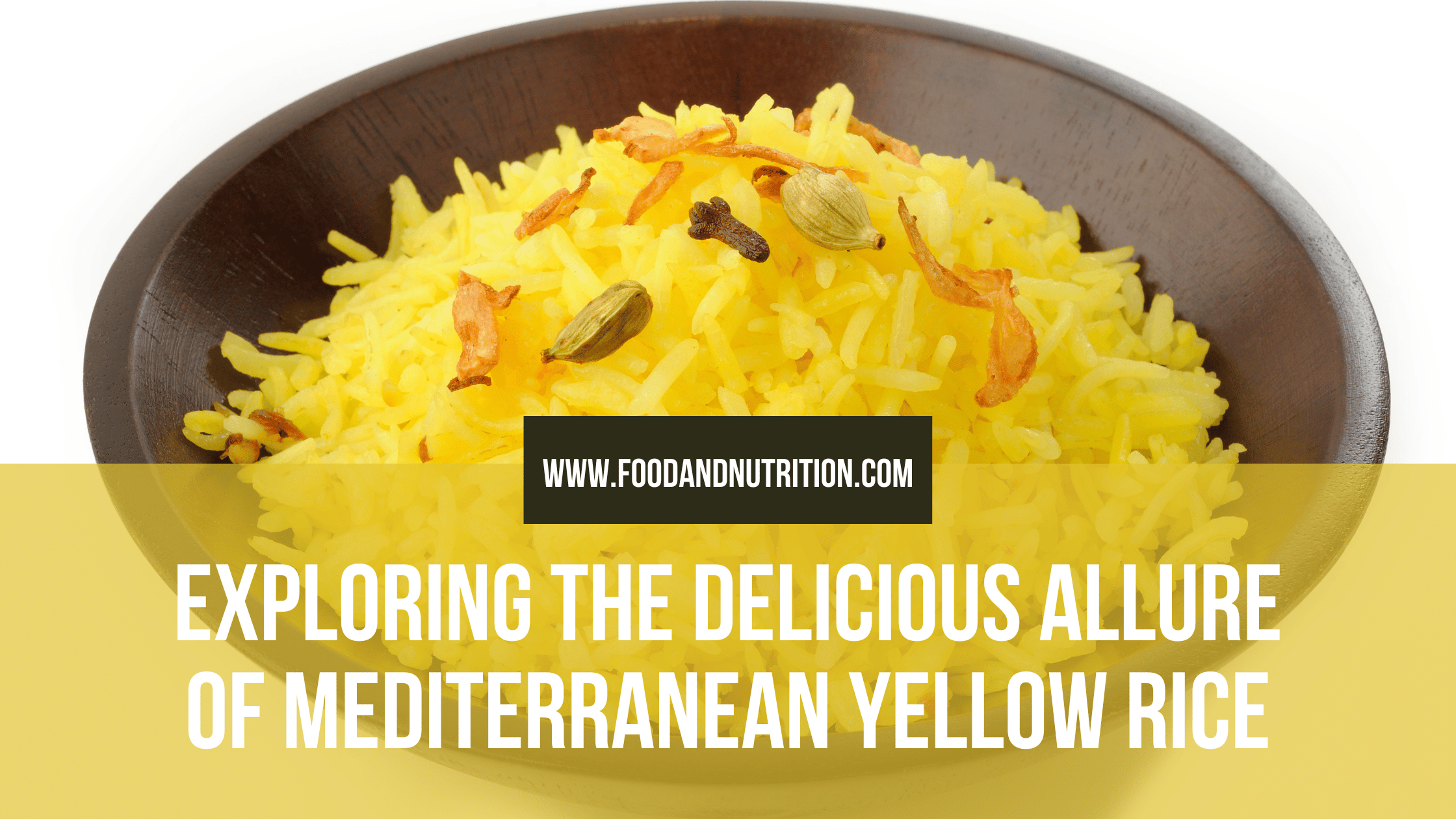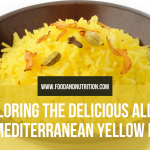Exploring the Delicious Allure of Mediterranean Yellow Rice

When it comes to Mediterranean cuisine, the vibrant flavors and aromatic spices that define the region’s dishes are truly captivating. Among the myriad of delightful recipes, Mediterranean yellow rice stands out as a beloved side dish that perfectly complements various Mediterranean and Middle Eastern meals. In this blog post, we will delve into the history, popularity, common ingredients, nutritional value, serving ideas, and chef tips for this irresistible culinary creation. Prepare to be inspired and captivated by the allure of Mediterranean yellow rice!
The History and Popularity of Mediterranean Yellow Rice
Mediterranean yellow rice has its roots in the rich culinary traditions of countries like Greece, Turkey, and Morocco. It draws inspiration from the diverse cultures that have shaped the Mediterranean region throughout history. The use of vibrant spices like turmeric, cumin, and paprika can be traced back to the ancient spice trade routes, which brought a variety of exotic flavors to the Mediterranean.
What makes Mediterranean yellow rice so popular is its ability to infuse ordinary rice with an explosion of flavors. The combination of spices, along with sautéed onions and garlic, creates a tantalizing aroma that whets the appetite. The vibrant yellow hue adds a visual appeal to the dish, making it an inviting and comforting addition to any table. Furthermore, its versatility allows it to be paired with a wide range of Mediterranean and Middle Eastern dishes, making it a popular choice for both casual family meals and festive gatherings.
Mediterranean Yellow Rice Recipe
Ingredients
- 2 tablespoons olive oil or avocado oil
- 1/2 sweet onion finely diced
- 3 cloves garlic crushed
- 3/4 teaspoon turmeric
- 1/4 teaspoon cumin
- 1/4 teaspoon paprika
- 1 1/4 teaspoons salt or to taste
- 1 1/2 cups basmati rice rinsed and drained
- 2 1/4 cups water
- 2 tablespoons finely chopped cilantro
- 2 tablespoons finely chopped flat-leaf parsley
- 1/4 cup toasted pine nuts or almonds
Instructions
- In a medium-sized pot over medium heat, add olive oil and diced onion. Sauté for 2-3 minutes until the onion becomes translucent. Add crushed garlic and continue sautéing for another minute.
- Mix in turmeric, cumin, paprika, and salt. Toast the spices until fragrant, about 1 minute.
- Pour in water, scraping the bottom of the pot to release any stuck bits, and add the rinsed and drained basmati rice. Stir well to combine.
- Bring the water to a boil, then cover the pot with a lid and reduce the heat to low. Simmer for 20 minutes or until the rice is tender and fluffy.
- Remove the pot from heat and stir in the chopped cilantro, parsley, and toasted pine nuts (or almonds). Serve immediately and enjoy with your favorite dishes!
Notes
Common Ingredients and Nutrition
The key ingredients in Mediterranean yellow rice include long-grain rice, aromatic spices (such as turmeric, cumin, and paprika), onions, garlic, and a touch of olive oil. These simple yet flavorful ingredients come together to create a dish that is both delicious and nutritious.
Turmeric, the star spice in this recipe, is known for its anti-inflammatory properties and potential health benefits. It contains curcumin, a compound with antioxidant properties that may support overall well-being. The aromatic spices not only provide a burst of flavor but may also offer additional health benefits, including digestion aid and immune system support.
Serving Ideas and Culinary Adventures
Mediterranean yellow rice is incredibly versatile and pairs harmoniously with various Mediterranean and Middle Eastern dishes. It serves as a delightful accompaniment to grilled meats like kebobs, lamb koftas, or chicken skewers. The aromatic flavors and vibrant colors of the rice also make it a perfect partner for roasted vegetables or a refreshing Greek salad. For a complete Mediterranean feast, serve the yellow rice alongside tzatziki sauce, hummus, and warm pita bread.
For a vegetarian or vegan twist, top the rice with grilled marinated tofu or falafel. The rice’s flavorful profile allows it to stand on its own as a main course, especially when accompanied by a medley of sautéed vegetables or a side of tangy Mediterranean salsa.
Chef Tips for the Perfect Yellow Rice
To achieve the best results when making Mediterranean yellow rice, consider the following tips from culinary experts:
- Rinse the rice thoroughly before cooking to remove excess starch and achieve a fluffier texture.
- Sauté the onions and garlic until they become soft and translucent, as this brings out their sweetness and enhances the overall flavor of the dish.
- Toast the spices in the oil before adding the rice to unlock their full aromatic potential.
- Use quality long-grain rice, such as basmati rice, for its delicate texture and ability to absorb flavors effectively.
- Allow the rice to rest for a few minutes after cooking to ensure it becomes perfectly fluffy.
Conclusion
Mediterranean yellow rice, with its captivating history, vibrant flavors, and versatility, has rightfully earned its place as a beloved dish in the Mediterranean culinary repertoire. The combination of aromatic spices, sautéed onions, and fluffy rice creates a taste sensation that is hard to resist. Whether you’re hosting a Mediterranean-themed dinner party or simply seeking a delightful side dish to elevate your weeknight meals, Mediterranean yellow rice is a culinary adventure that promises to satisfy your taste buds and transport you to the sun-kissed shores of the Mediterranean. So go ahead, indulge in this flavorful creation and experience the enchantment of Mediterranean cuisine!
- Discover the Nordic Diet: A Path to Health and Sustainability
- Ultimate Guide to Nutrition & Wellness Tips for Healthy Travel Adventures
- Personalized Menu Planning: Tailoring Nutrition to Individual Needs
- Discover the Best Healthy Cooking Oils: Benefits, Uses, and Expert Tips
- Savor the Sunshine Flavors: Lemon Chicken Skewers for Grilling Bliss
- Ultimate Guide to Adaptogens: Benefits, Uses, and How to Incorporate Them
